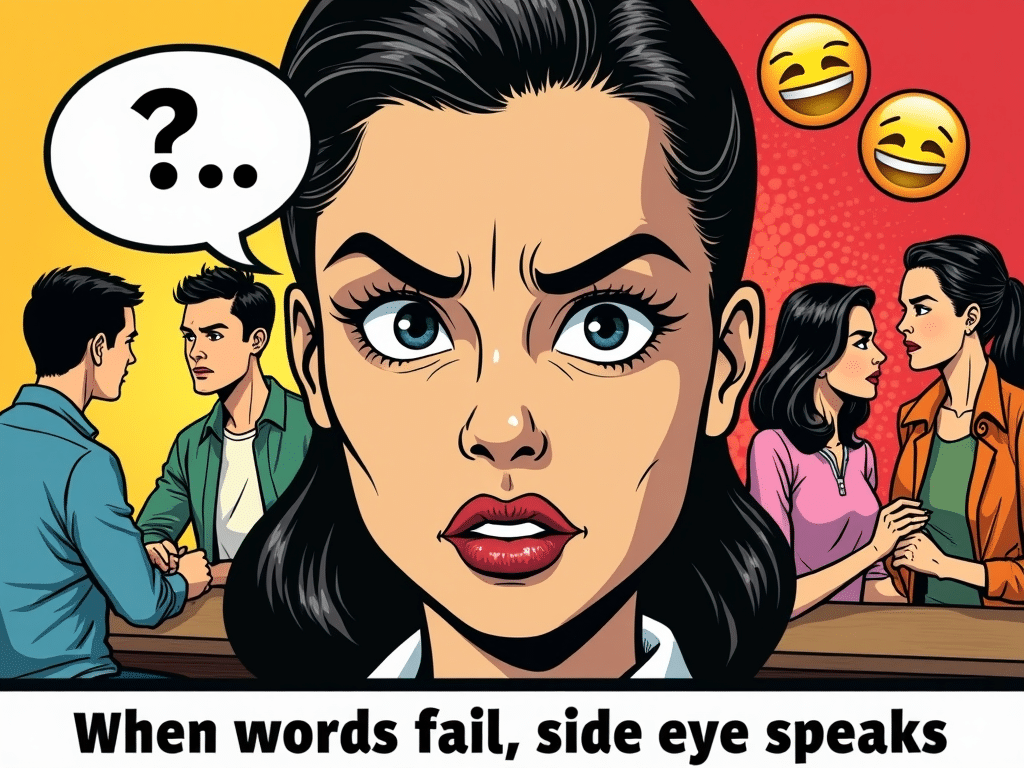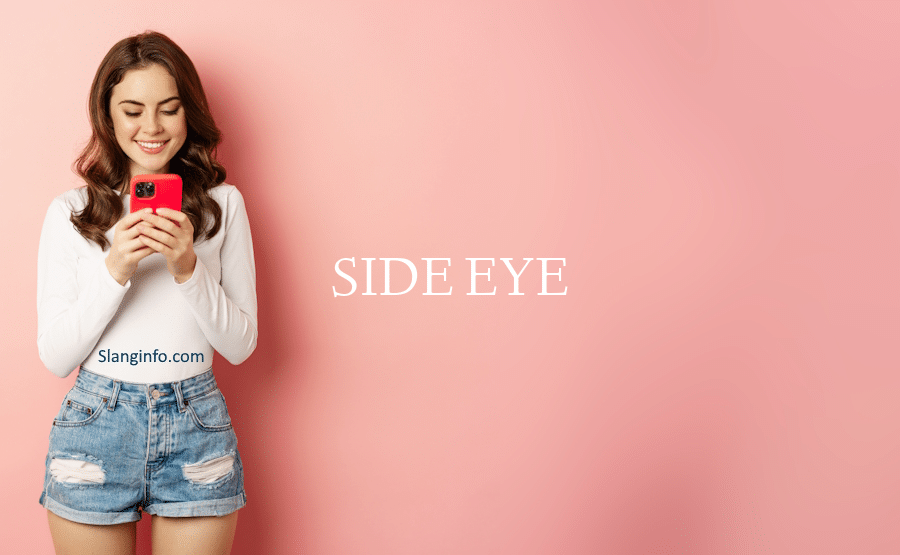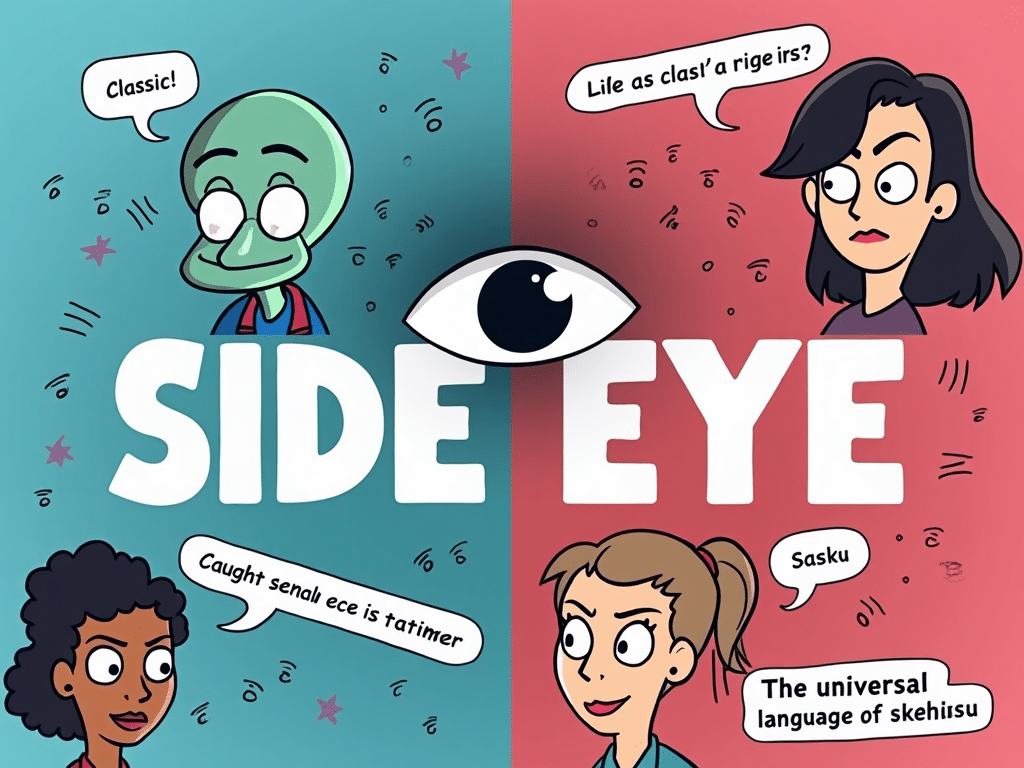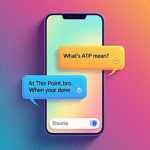When you hear the term “side eye,” what comes to mind? For many, it conjures up images of skeptical glances or disapproving looks. The side eye is a powerful non-verbal cue that communicates a range of emotions, from disbelief to judgment. Let’s dive into what side eye really means and how it’s used in everyday life!
| Key Takeaways | Meaning |
|---|---|
| Definition | A sidelong glance expressing skepticism, disapproval, or curiosity. |
| Origin | Emerged in the 1820s; popularized in modern slang. |
| Common Usage | Used to convey suspicion or judgment in various contexts. |
| Cultural Impact | Frequently referenced in memes, social media, and everyday conversation. |
Side Eye Meaning: Understanding This Expressive Gesture 👀

The Etymology of “Side Eye”
The term “side eye” has roots that go back a bit further than you might think. Here’s a quick breakdown:
- Historical Context: The phrase began to gain traction in the early 19th century, with its first known usage appearing around the 1820s. It was often used to describe a glance that was not directly meeting someone’s gaze.
- Evolution: Over time, the meaning expanded to encompass a range of emotions and reactions, particularly those involving skepticism or disapproval.
I remember the first time I really understood the power of the side eye. I was at a family dinner when my cousin made a questionable joke. My aunt shot him a side eye that said everything without uttering a word. It was hilarious and perfectly conveyed her disapproval!
The Gesture Explained
So what exactly does giving someone the side eye look like? Here’s how to visualize it:
- Physical Description: A side eye involves turning your head slightly away from the person you’re looking at while keeping your eyes focused on them. It’s often accompanied by raised eyebrows or a slight smirk.
- Emotional Connotations: This gesture can convey various feelings:
- Skepticism: “Are you serious right now?”
- Disapproval: “I can’t believe you did that.”
- Curiosity: “What are you up to?”
Common Situations for Giving a Side Eye
Here are some classic scenarios where you might find yourself giving or receiving a side eye:
- Questionable Statements: When someone says something outrageous or hard to believe.
- Awkward Social Situations: Like when someone makes an inappropriate comment at a party.
- Absurd Behavior: If someone is acting out of character or doing something silly.
For instance, I once gave my friend a side eye when he tried to convince me that pineapple belongs on pizza. The look said it all—pure disbelief! 🍍🍕
Side Eye in Popular Culture

The side eye has become more than just a gesture; it’s an iconic part of our cultural lexicon:
- Social Media Trends: Platforms like Twitter and TikTok are filled with memes that capture the essence of the side eye, often using GIFs or images of celebrities giving that perfect glance.
- Memes and GIFs: You can find countless memes featuring characters giving side eyes, which perfectly encapsulate feelings of judgment or skepticism.
I once saw a meme with a famous celebrity giving side eye during an awkward interview moment, and it perfectly captured how everyone felt watching it!
The Generational Divide
Interestingly, different generations might interpret or use the term “side eye” differently:
| Generation | Interpretation of Side Eye |
|---|---|
| Gen Z | Often used humorously; relatable in memes |
| Millennials | Mix of casual and serious; understands context |
| Gen X | More likely to associate it with disapproval |
| Boomers | Primarily see it as an expression of skepticism |
I’ve noticed that my younger siblings use side eye GIFs all the time in group chats to react to boring stories or bad jokes. It’s like their secret language!
The Cultural Significance of Side Eye
Now that we’ve explored the basics of side eye, let’s dive into its cultural significance and how it shapes our interactions every day.
Side Eye in Everyday Life
The side eye is more than just a gesture; it’s a powerful form of communication that transcends words. Here’s how it plays out in various settings:
- Social Interactions:
- In group settings, a well-timed side eye can convey shared disbelief or judgment without saying a word. It’s like a secret signal between friends.
- Example: At a party, if someone makes an awkward joke, you might exchange side eyes with your best friend, silently agreeing that it was cringeworthy.
- Workplace Dynamics:
- In professional environments, the side eye can indicate skepticism about a colleague’s idea or decision. It’s often used to express doubt without creating conflict.
- Example: During a meeting, if someone proposes a risky strategy, you might catch your coworker giving the side eye to another colleague, signaling their disapproval.
- Family Gatherings:
- Family events are ripe for side eye moments! Whether it’s a relative making an outrageous comment or a sibling doing something silly, the side eye can be a humorous way to express your feelings.
- Example: At Thanksgiving dinner, when Uncle Joe starts talking politics, you might exchange side eyes with your cousin to show your mutual discomfort.
Side Eye in Popular Culture

The side eye has made its mark in pop culture, becoming a recognizable expression in various forms of media:
- Movies and TV Shows: Characters often use the side eye to convey sarcasm or disbelief. Think of sitcoms where characters give each other knowing looks during awkward situations.
- Memes and GIFs: The internet loves a good side eye! You can find countless memes featuring celebrities or animated characters giving side eyes to express judgment or skepticism.
For instance, one of my favorite memes features an iconic character from a popular show giving the ultimate side eye during an awkward moment. It perfectly captures the feeling we all have when someone says something ridiculous!
The Generational Gap
Different generations interpret and use the term “side eye” in unique ways:
| Generation | Interpretation of Side Eye |
|---|---|
| Gen Z | Uses it humorously; often in memes |
| Millennials | Mix of casual and serious; understands context |
| Gen X | More likely to associate it with disapproval |
| Boomers | Primarily see it as an expression of skepticism |
For example, my younger sister often uses side eye reactions in her texts to convey her feelings about TikTok trends. Meanwhile, my parents might use it more seriously when discussing someone’s behavior at family gatherings.
Tips for Using Side Eye Effectively
If you want to master the art of the side eye, here are some tips:
- Timing is Everything: Use the side eye in moments where words might not capture your feelings accurately.
- Facial Expression Matters: Pair your side eye with raised eyebrows or a slight smirk for maximum effect.
- Know Your Audience: Make sure the people around you understand the context; otherwise, they might think you’re just being rude!
Conclusion
In conclusion, the side eye is more than just a look; it’s a nuanced form of communication that conveys feelings of skepticism, disbelief, and humor all at once. Whether you’re using it among friends, in professional settings, or during family gatherings, mastering this gesture can enhance your social interactions.
So next time someone says something outrageous or does something silly, don’t forget the power of the side eye! It’s an expressive tool that can say so much without uttering a single word. And if you want to explore more about body language and expressions, check out our articles on shade and gestures. Keep those expressions sharp! 👀✨







